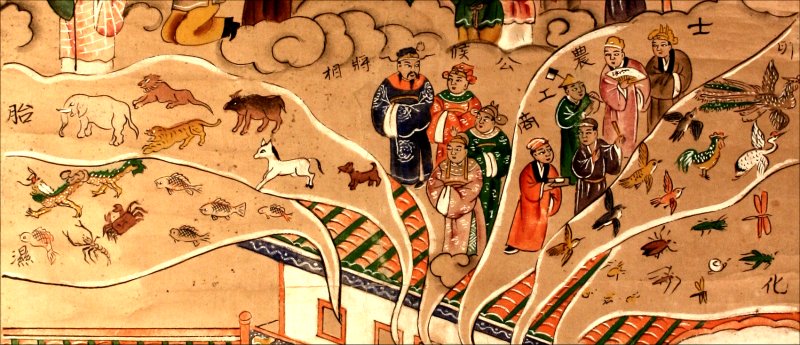
Translation
(from right to left)
- Transformation
- Egg
- Officials, farmers, artisans, merchants
- Dukes, magistrates, generals and prime ministers
- Womb
- Damp
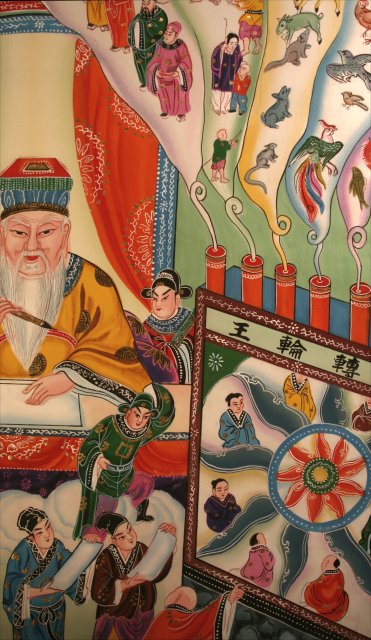
A second example of rebirth from another hell scroll (E10).
A Taiwanese account of hell
For a description of reincarnation from a Taiwanese spiritual medium who had engaged in a series of hell tours between 1976 and 1979, see Voyages to hell, Chapter 58.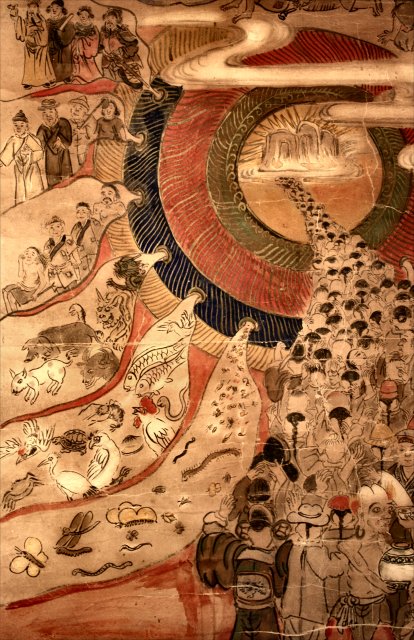
A third example of rebirth from another hell scroll (C6).

A fourth example of rebirth from another hell scroll (S3).
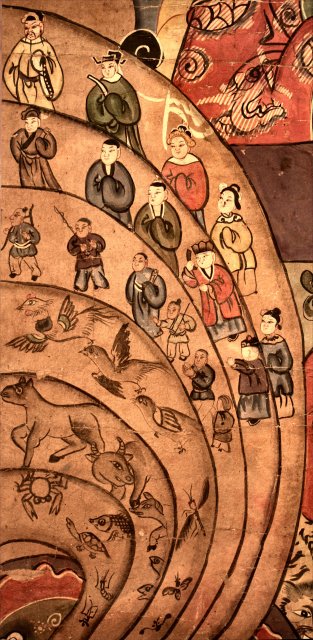
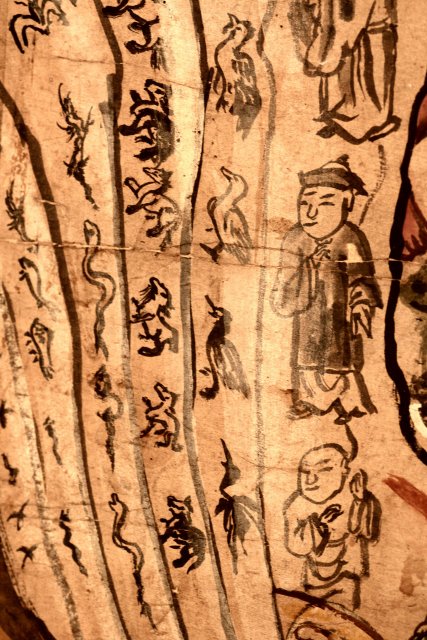
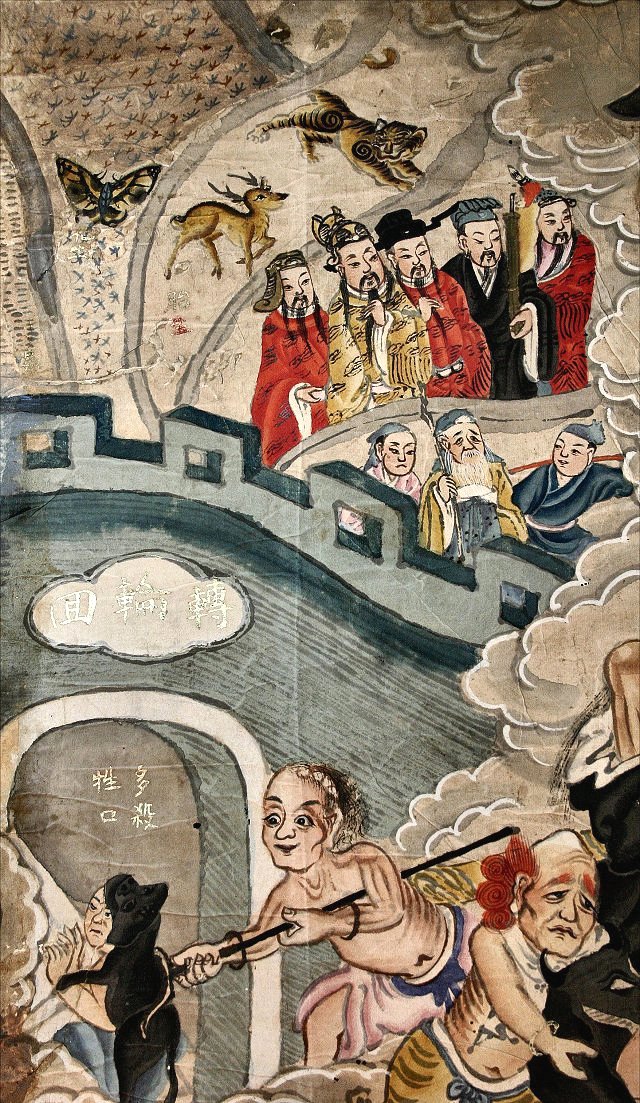
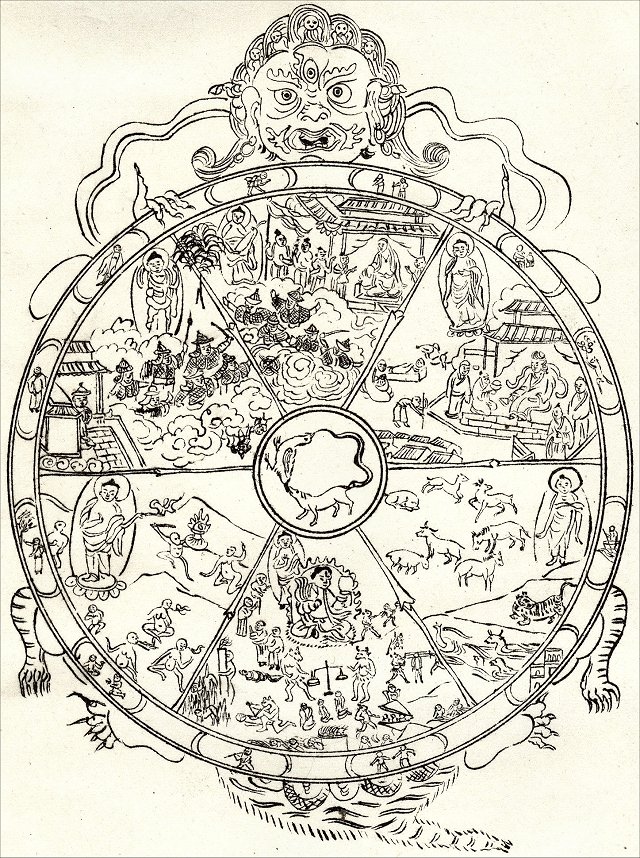
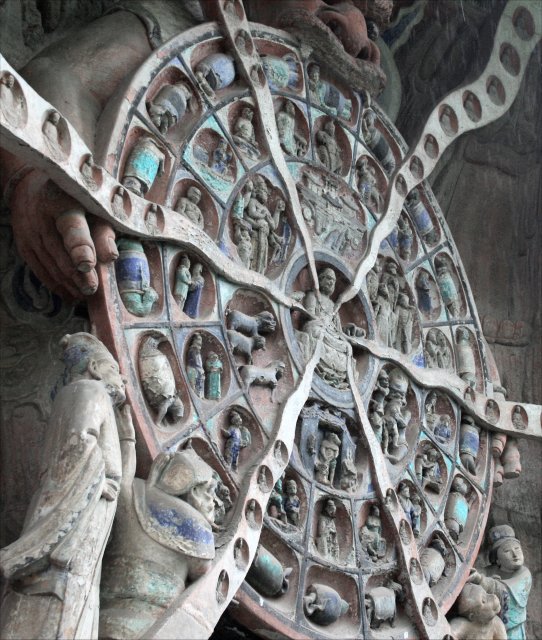
The six realms of rebirth as depicted at the Dazu Rock Carvings. It should be noted that there is a certain ambiguity in exactly where these rebirths actually occur within the system of hells. Accounts ranging from the "Devaduta sutta" of The middle length discourses of the Buddha to modern Tibetan descriptions in Meditative state in Tibetan Buddhism indicate that there are six types of rebirth, rebirth in hell being just the lowest of them. These six are further depicted on mandalas such as this version at Dazu. That is, the transformations into hungry ghosts, animals and so forth take place without a mandatory passage through hell. Yet the Chinese hell scrolls show the bad and the good both entering hell and the good either leaving it via the bridge to the Western Paradise (a.k.a. Pure Land) or passing through hell to be reborn as humans, perhaps even as high officials, generals and nobles as in our A series scroll here.
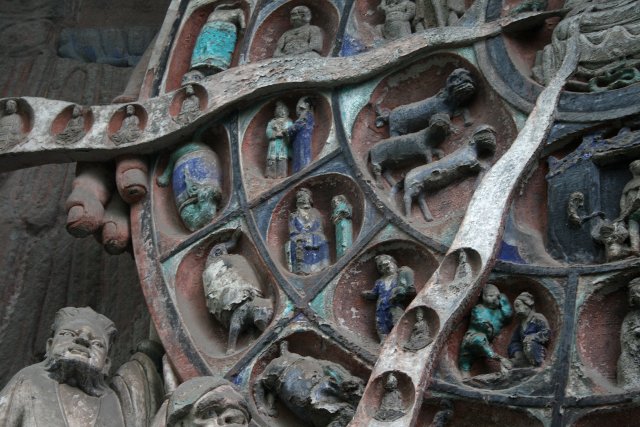
The animal portion of the six realms of rebirth as depicted at the Dazu Rock Carvings.
For a description of these traditional six forms of rebirth (although in my opinion it remains unclear how they fit into the Chinese interpretation of hell and its own six forms of rebirth offered in the tenth hell) from a Taiwanese spiritual medium who had engaged in a series of hell tours between 1976 and 1979, see Voyages to hell, Chapter 15 and Chapter 58.
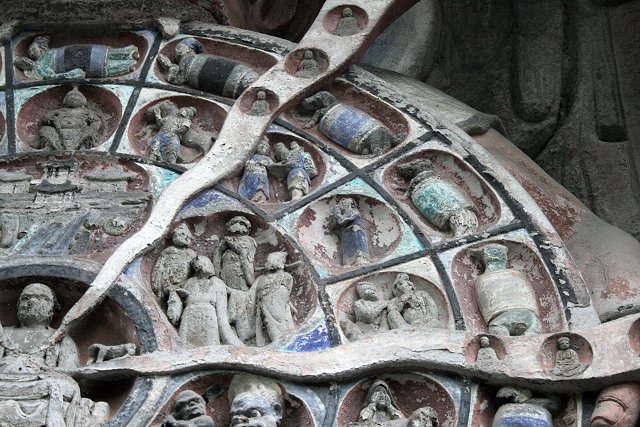
The human portion of the six realms of rebirth as depicted at the Dazu Rock Carvings.